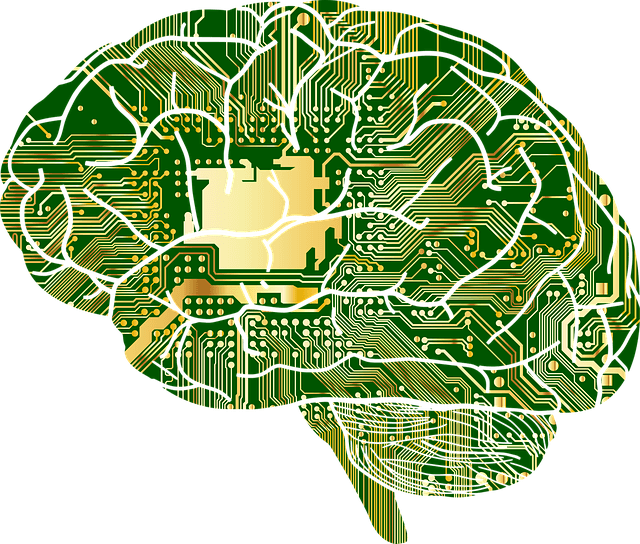Affinity Bias: Why Do We Like People Who Are Like Us?
Affinity bias—our tendency to favor those who remind us of ourselves—can subtly shape hiring, friendships, and even everyday decisions. Here’s why recognizing it is the first step to building fairer, more inclusive environments.

Affinity bias is our natural tendency to prefer people who remind us of ourselves. It is a type of cognitive bias that affects how we think and make decisions. Whether it’s someone who went to your school, shares your taste in music, or comes from your hometown, we often feel an instant connection with people who seem familiar. While this automatic preference helped our ancestors survive by sticking with trusted group members, it can lead to unfair decisions and missed opportunities in today’s diverse world.
Think about the last time you formed a new friend group or team. Did you naturally gravitate toward people who looked, acted, or thought like you? Most of us do this without realizing it. Our brains take shortcuts (aka heuristics) to make quick decisions about who to trust and connect with. But these mental shortcuts can also block us from meeting amazing people who are different from us.
How Affinity Bias Works
Our brains process thousands of pieces of information every day. To handle this flood of data, our minds create shortcuts. One of these shortcuts makes us feel safe and comfortable with people who share our traits or background. This mental process happens automatically – like reaching for your favorite snack without thinking about why you like it.
Scientists believe this preference developed millions of years ago. Back when humans lived in small groups, trusting strangers could be dangerous. Those who stuck with familiar faces were more likely to survive and pass on their genes. Think of it like joining a new table at lunch – most people pick seats next to classmates they already know rather than complete strangers.
This bias doesn’t just affect who we hang out with. It influences bigger decisions too. A teacher might give slightly better grades to students who remind them of themselves. A coach might pick players who grew up in the same neighborhood. A club president might choose officers who share their interests.
None of this happens on purpose – it’s just our brain’s way of saying “this person seems safe and trustworthy because they’re like me.”
The tricky part is that affinity bias often works together with other mental shortcuts. For example, if you love basketball, you might automatically think other basketball players are smarter or more hardworking than they really are. Or if someone uses the same slang as you, you might trust their opinions more than you should.
Signs of Bias
Look around your school, and you’ll spot affinity bias in action everywhere. At lunch, athletes often sit with other athletes. Drama kids hang out with theater friends. People who speak the same language tend to form their own groups. None of this is wrong, but it shows how naturally we sort ourselves based on similarities.
Here are some clear examples of this kind of cognitive bias in everyday life:
In School
- Teachers might call more often on students who remind them of themselves as teenagers
- Students pick project partners who share their interests or background
- Club leaders select members similar to themselves
In Jobs and Internships
- Managers hire people who went to their old high school
- Interviewers favor candidates who like the same sports or music
- Students get recommendations from teachers they “click” with
On Social Media
- People follow accounts that share their views
- Users mainly interact with content from people similar to themselves
- Friend suggestions focus on people with matching interests
In Friend Groups
- People stick to friends who share their style or hobbies
- Groups form around common interests like gaming or music
- New students often befriend others from similar backgrounds
The key is not to eliminate these natural connections, but to recognize when they might limit our choices or lead to unfair decisions.
Impact on Society
When everyone follows their affinity bias, it creates bigger problems that affect our whole community. It becomes a problem when people start to favor only those who are part of the ingroup, while rejecting people who aren’t part of that group.
These problems might start small, like certain students feeling left out of study groups, but they can grow into serious social issues.
In the Classroom
Picture your school’s advanced classes. Do they reflect the diversity of your whole school? Often, teachers and counselors unconsciously guide students like themselves toward higher-level courses. Meanwhile, equally talented students from different backgrounds might not get the same encouragement.
In Sports and Activities
Think about your school’s teams and clubs. Some might be dominated by specific groups, while others feel left out. A basketball coach who only played guard positions might favor similar players. A debate team captain might pick members who think and talk just like them.
In Leadership
Look at your student government or club officers. Does everyone come from similar backgrounds? When leaders pick people like themselves, they miss out on different viewpoints that could make better decisions for everyone.
In Social Life
High school cliques often form around similarities – creating invisible walls between groups. These divisions can lead to:
- Misunderstandings between different groups
- Less sharing of different perspectives and ideas
- Fewer chances to learn from people with different experiences
- Social isolation for students who don’t fit typical groups
Understanding how this type of bias affects our school community is the first step toward making it more welcoming for everyone. When we recognize these patterns, we can start to break them.
Recognizing Your Own Affinity Bias
You don’t need special tools or tests to spot this kind of bias in your own life. Start by paying attention to your automatic reactions and choices. Here’s how:
Check Your First Impressions
Notice who you instantly like or trust. Did that new student catch your attention because they wear the same brand of shoes? Did you warm up to a teacher because they remind you of your favorite cousin? These quick judgments often reveal our hidden preferences.
Look at Your Inner Circle
Pull out your phone and scroll through your recent texts. Who do you talk to most? Make a quick list of your five closest friends. What do you all have in common? Many teens find their closest friends share their music taste, style, or background.
Watch Your Comfort Zone
Pay attention to when you feel most comfortable and uncomfortable:
- Which lunch tables feel most welcoming?
- Who do you pick first for group projects?
- Which classmates do you avoid?
- What makes you nervous about certain groups?
Ask Yourself These Questions
- Do I judge some people more harshly than others?
- Do I give certain people more chances to explain themselves?
- Who do I naturally trust or distrust?
- What assumptions do I make about people based on their appearance or interests?
Remember: Having these preferences doesn’t make you a bad person. Everyone has affinity bias. The key is to notice it so you can make fairer choices.
How to Overcome Affinity Bias
Once you spot your own bias, you can take steps to make better choices. Here are practical ways to push past your comfort zone and connect with different people.
Start Small
- Sit at a different lunch table once a week
- Pick project partners you don’t know well
- Join a club where you’re different from most members
- Talk to someone who seems nothing like you
Make Better Decisions
Instead of going with your gut reaction:
- Write down why you like or dislike someone
- List their actual qualities, not your assumptions
- Ask yourself: “Would I feel the same if they were different?”
- Take time to decide instead of making snap judgments
Expand Your Experience
- Watch shows about people different from you
- Listen to music from other cultures
- Read books by authors with different backgrounds
- Follow social media accounts that show different perspectives
Practice Fair Leadership
If you lead a club or team:
- Create clear rules for choosing members
- Ask others for input on decisions
- Look for talent in unexpected places
- Welcome new ideas, even if they seem strange at first
The goal isn’t to ignore your natural preferences. Instead, try to make choices based on facts rather than familiar feelings. When you do, you’ll discover amazing people you might have overlooked.
Why Fighting Affinity Bias Matters
Recognizing and overcoming this type of bias can have an important influence on your decision-making and social experiences. When you push past your comfort zone:
- You gain fresh perspectives on old problems
- Your friend group becomes more interesting
- You develop better leadership skills
- You prepare for a diverse workplace
- Your creative thinking improves
- You become more adaptable
Colleges and employers want people who can work with anyone. They look for students who:
- Show curiosity about different viewpoints
- Build bridges between groups
- Make fair decisions
- Lead diverse teams
- Solve problems creatively
What You Can Do
Start with one small step:
- Introduce yourself to someone new
- Join a club you wouldn’t normally consider
- Question your quick judgments
- Include others in your group activities
Remember: The people who seem most different from you might become your closest friends, best teammates, or most important connections. Don’t let affinity bias stop you from discovering all the amazing people around you.
Learn More
Want to dig deeper? Check out these resources:
- Talk to your school counselor about diversity programs
- Join student groups that promote inclusion
- Look for leadership workshops about bias
- Follow organizations that celebrate differences





